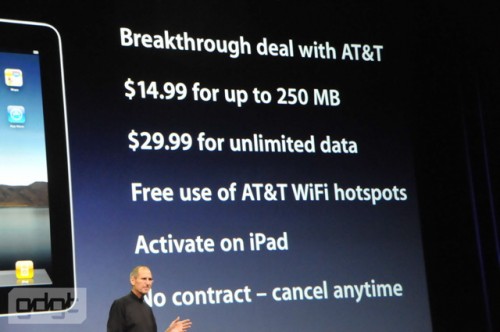
In what appears to be a quid pro quo deal between Apple and AT&T, AT&T will retain the exclusive rights to sell the iPhone for another six months, in exchange for offering a heavily discounted data-plan for the iPad.
According to Computerworld, Brian Marshall, a Wall Street analyst for BroadPoint AmTech who has long suggested that an Apple and Verizon deal is just a matter of time, AT&T’s normal wireless data plan was deeply discounted in order to convince Apple to stick with AT&T until at least 2011. Rumors of the iPhone moving to Verizon, and possibly other carriers, have been circulating for months, even years, and the three-year exclusive with AT&T was set to end this summer.
Marshall and other analysts felt certain that a deal with Verizon was imminent, and the top cell phone carrier in America would be selling the iPhone as early as this summer. He also believed that the first part of that deal would be to see the iPad’s 3G network connect through Verizon instead of AT&T. When that deal disappeared, Marshall claimed that he “was floored.”
“AT&T had to do something dramatic to get the iPad,” Marshall said.
That “something dramatic” appears to be AT&T’s data plan pricing for iPad users, and the fact that iPad users will not need to sign any contracts- a first for AT&T. iPad owners have their choice of data plans; $15 per month for 250MB of data, while the unlimited plan runs $30. Both are a discount of around 50 percent.
“For that pricing, AT&T was able to negotiate a six-month extension on the iPhone exclusive,” Marshall said.


